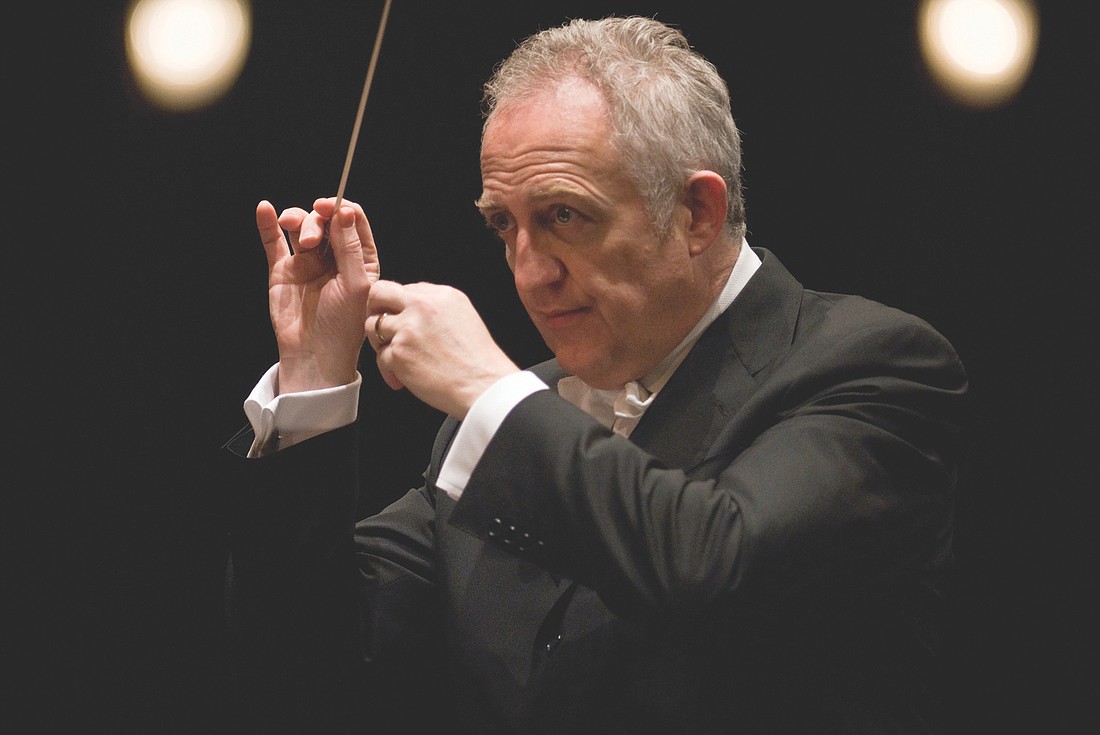- May 5, 2025
-
-
Loading

Loading

If there was ever any doubt about the versatility and virtuosity of the players of the Sarasota Orchestra, it was completely laid to rest this week in the fifth installment of the Masterworks concert series, led by guest conductor Bramwell Tovey.
The program, titled"Sounds of Nobility," included the “Rob Roy Overture” of Hector Berlioz, the Brahms Double Concerto for Violin and Cello, ending with the First Symphony of British composer Sir William Walton.
I’ve been attending concerts of the Sarasota Orchestra for almost 20 years now, but I’ve never heard this band of players so well primed and ready, playing a most difficult program with such ease and elan as I heard this past Sunday afternoon at Van Wezel Performing Arts Hall.
Guest conductor was the venerable Bramwell Tovey, who recently completed a long tenure as music director of the Vancouver Symphony and is a regular guest conductor of most every major orchestra in the world, including the New York Philharmonic, Los Angeles Philharmonic, the BBC orchestras, and on and on. He conducts with economy of gesture, but his eagle eyes are always focussed on the players and the next cue to be given. I’ve witnessed his work several times in the past, and find him one of the most musical conductors around today.
When approached to conduct the Walton First Symphony, Tovey agreed, but said he might need an extra rehearsal, as it is one of the most difficult pieces in the orchestral repertoire. Apparently it wasn’t needed, given his comments on the quality of the orchestra when he introduced the work from the stage.
Berlioz’ “Rob Roy” is written in the rhythmic Scottish tradition, but isn’t really one of his best compositions. There is a great deal of sameness present, and Berlioz himself rather dismissed it, except for the lovely English horn theme, played by Michael Austin. Berlioz later gave the theme to the solo viola in his “Harold in Italy,” a much greater musical success.
The Brahms Double Concerto for Violin and Cello featured violinist Simone Porter and cellist Joshua Roman in an outstanding performance of Brahms’ final orchestral work. These exciting young soloists had never performed together before this engagement, yet they played with a synergistic enthusiasm that is seldom found, even in more veteran performers.
Roman’s cello playing features a full-bodied sound throughout the range, and Porter matched him note for note in their extended passages together. The double cadenza in the first movement was beautifully played and set the tone for everything that followed. The Brahms Double uses the two solo instruments in the orchestral framework as a whole, rather than as a solo showcase, as in most concertos of the Romantic era. Both players were easily up to the technical and interpretive demands of the piece, and the lovely lyric theme of the 2nd movement soared through the hall, touching everyone with its sheer beauty.
Before performing the Walton First Symphony, Tovey gave a most eloquent and humorous introduction on the piece and its history, again stressing that it is seldom played, primarily because it is one of the most difficult in the repertoire.
Walton’s First Symphony is basically tonal and diatonic, with a few references to perhaps Sibelius, maybe a little Howard Hanson, and other composers of the early 20th Century. I also felt that John Williams, known for his many movie scores, must be a fan of Walton, since he has almost always used an ostinato rhythmic structure as background for an imposing march-like theme. Think of the title music from “Superman” or any Indiana Jones movie.
Yet Walton speaks with his own voice, and each movement gives forth a definite mood, from the “conflict and resolution” of the first movement, the “scherzo played with malice” of the second, the “melancholy lament” of the third — played so beautifully by Betsy Traba — to the biting yet triumphant theme of the final movement’s grand fugue, an exultant finale of the work. This is indeed a major contribution to the repertoire that certainly needs to be heard more often.
With this set of concerts, I feel the Sarasota Orchestra has again vaulted over most other regional orchestras in this country to a preeminence that it so rightfully deserves.